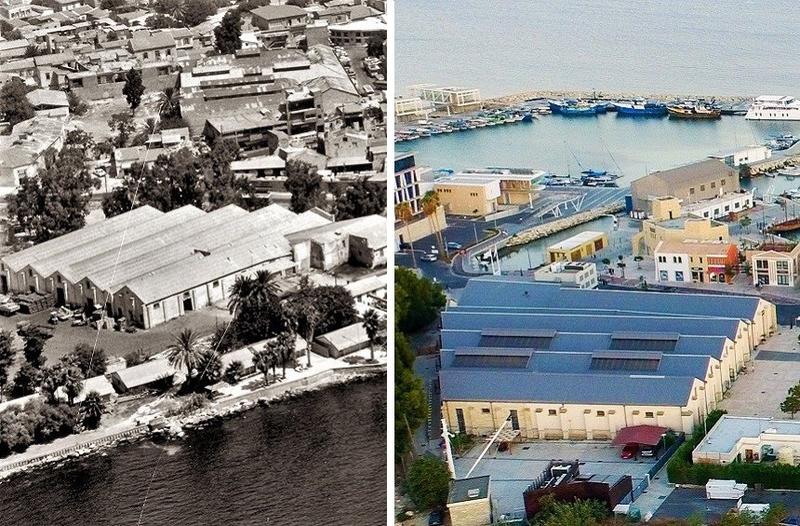
In 1913, one of the most important remaining industrial buildings in Cyprus was built at a small distance from the Limassol sea. Exactly 100 years later, this space which was once used for storage, was set to take on a central role in the life of the city.
The Trakasol warehouses, a complex with a triangular roof, were built near the mouth of the Garyllis river (the entrance of the Limassol Marina today), and belonged to an English company called Tragasol Gum Supply Company Ltd. During the 1950s, the warehouses were sold to the Colonial Government, and became a part of the port.
It is believed that the word tragasol comes from tragacanth, a plant from the eastern Mediterranean region. It produces a type of resin that is used in the production of food, but also in textile and leather processing.
The southeastern and oldest section of the Trakasol complex was used as a quarantine area for the Port Customs.
In time, this type of resin was produced by processing the cores of carobs. Cyprus’s rich production of carobs resulted in the island becoming a popular supplier of this material, which was also used for the industrial production of elastic membranes and photographic film. The bulk of exports were from the Limassol Port.
One of the most significant efforts to promote the Cypriot production of carobs was the export of tragasol to England, where the material was used in the production of parachutes during the Second World War. The gradual increase in the use of plastic has since led to a decrease in the use of carob cores.
Dozens of permanent workers were employed at the Trakasol warehouses, while seasonal staff was hired in the summer, particularly students working for pocket money.
The decline of the carob trade in Cyprus after 1960 resulted in the demolition of the buildings associated with it. In 2008, the plans for the construction of the Limassol Marina brought the abandoned buildings of the historic warehouses back to the forefront.
In 2012, the complex was restored. Today, the southern part of the warehouses is an impressive 1500 sq.m. event venue.
Sources: 'The sea and the poppy flower' by Christian Christou, 'The carob tree' by Evagoras and Kathleen Lanitis Foundation
Photos: 'The sea and the poppy flower' by Christian Christou, Limassol Historical Archives, Limassol Marina archive